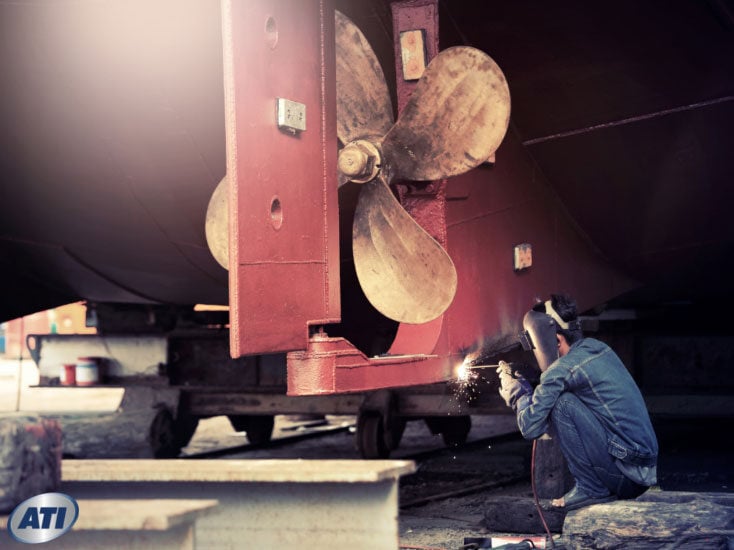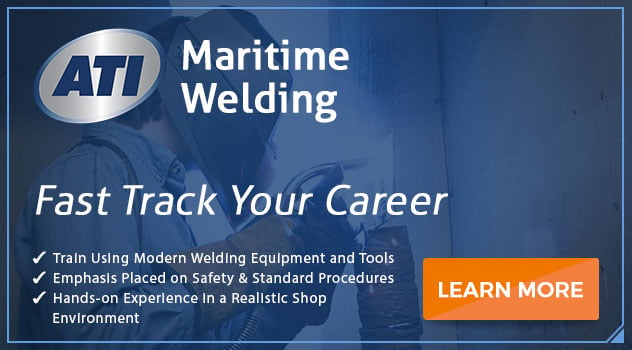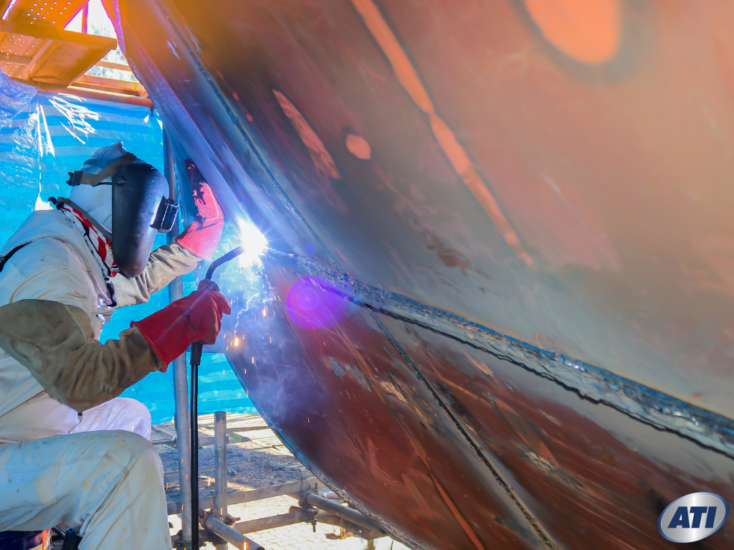What is Maritime Welding and How is it Different from Other Forms of Welding?

A good welder can usually find employment, but having a specialization can give you an edge. That’s why many go into the maritime welding.
While maritime welding sometimes means the work a commercial welder-diver performs on an offshore oilrig, it also means the welding performed to build or repair marine craft. As with any type of welding, a maritime welder connects metals or plastics at the molecular level, improving their ductility, tensile strength, and hardness so that the materials stand up to high pressure, extremes of temperature, and other stresses in the marine environment.
How Maritime Welding Differs from Other Welding
Maritime welding aims to produce joints that are watertight and oil tight. Welded joints, as opposed to riveted joints, reduce steel weight and require less maintenance than riveted joints. Welding technology is crucial in the shipbuilding industry for producing smooth hull surfaces, reducing hull resistance and power needs.
The three most common types of welding used in shipbuilding are:
- Arc welding — Forms a closed circuit between a metal electrode and an electrical power supply. By raising the electrode from the plate a few millimeters, the electric current creates an arc at high temperature and jumps the gap. This melts the parent metal and the electrode and metal so that they fuse. This is the most common type of welding used in shipbuilding.
- Gas welding — A metal joining process where ends are heated at their interface with gas flames (oxygen or acetylene).
- Resistance welding — Metals are joined through pressure and passing current. One advantage of this type of welding is that no other materials are needed, making it cost effective. Types of resistance welding are spot and seam, projection, flash, and upset welding.
These are some specific welding techniques the beginning maritime welder should become familiar with:
- GMAW, or gas metal arc welding — Known for high welding speeds and less distortion of the workpiece, as well as high quality welds.
- SMAW, or shielded metal arc welding (also known as stick welding). Welds can be done in any position.
- Submerged arc welding — Known for producing high quality welds from welders with minimal skills.
- GTAW, or gas tungsten arc welding — Good for welding thin material.
- OAW, or oxyacetylene welding — Easy to learn. Equipment is cheaper than that of most other rigs, and is more portable.
Ceramic welding is another method that is being used increasingly in shipbuilding, primarily for the shell plates of the vessel. This technique is also used when the side of the weld joint is not accessible.
Robotic welding is also on the increase in shipbuilding, particularly in unreachable areas. Arc welding and spot welding are the two main techniques used for automated welding.
Training in Maritime Welding
If you’re interested in maritime welding, you should look for training that provides knowledge in aluminum, structural, and pipe welding, so that you are prepared for all the various aspects of shipyard welding. Welders need to know how to weld in a number of different positions, so that they are prepared for any job. They also need training in a wide range of welding equipment.
Many maritime welding training courses are available. Look for a training course that does the following:
- Emphasizes safety and standard procedures for shipyards.
- Provides hands-on experience in a realistic shop setting where you can demonstrate proficiencies.
- Provides classroom and lab training on modern welding equipment and tools.
You may want to look for a program from a vocational college or community college that offers an associate’s degree in welding with a specialization in maritime welding. Such courses are typically two years in length, although you probably can earn a diploma in this subject in about a year. If you follow through with the associate degree, you might include a service management component, which will help you move up in your career or possibly even start your own business.
Be sure that the course you enroll in offers you practical training in construction and repair of equipment and structures built of steel. Your training should also prepare you to work in all positions.
Among the courses, a proper maritime welding program should offer are these:
- Introduction to maritime welding
- Gas metal arc welding
- Gas tungsten arc welding
- Gas metal arc/gas tungsten arc welding, aluminum
- Flux core arc welding
- Shielded metal arc welding structural
- Gas tungsten arc/shielded metal arc welding 2G and 5G pipe
- Shielded metal arc welding 6G pipe
- Advanced process projects and certification
If you go for the service management component, you should take some courses in technical writing, communications, speech, service management, and computer applications. Maritime welding offers a variety of employment opportunities. Open your horizons by enrolling at Advanced Technical Institute and earn a degree in the Associate in Occupational Science Maritime Technology with Service Management program.

Industry Knowledge
Welcome to the Advanced Technology Institute's Blog, your resource for industry insights and discussions on technologies shaping the future of automotive, heavy vehicle, hvac, welding, and other related career paths.
Explore how ATI's curriculum and hands-on learning opportunities can propel your career in the tech-driven world.


.jpg)